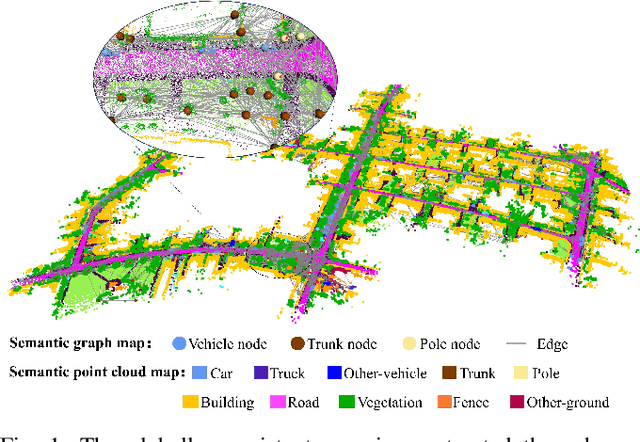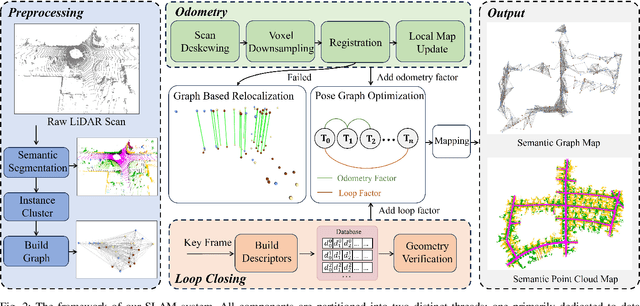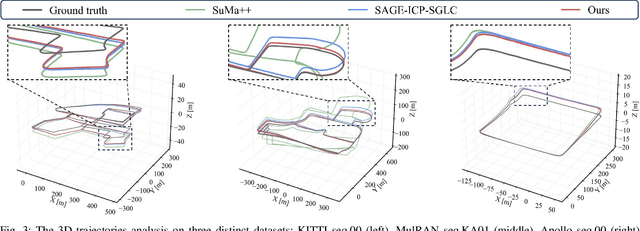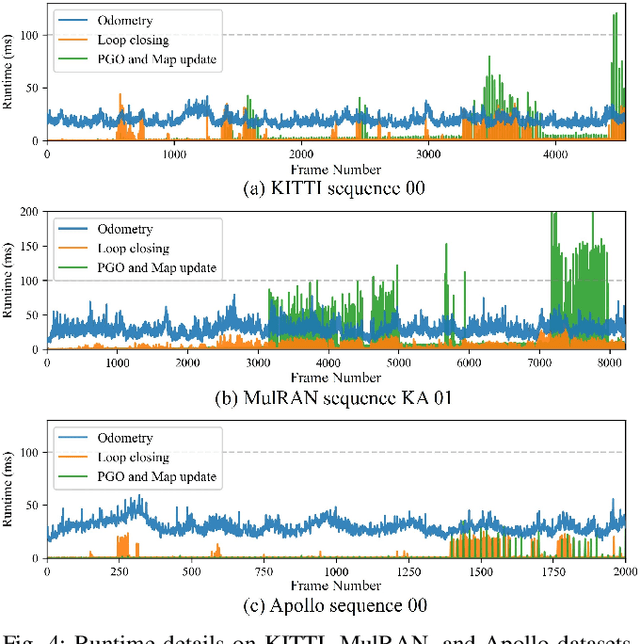Yun-Hui Liu
Harbin Institute of Technology, Shenzhen, Chinese University of Hong Kong
SpaceVista: All-Scale Visual Spatial Reasoning from mm to km
Oct 10, 2025Abstract:With the current surge in spatial reasoning explorations, researchers have made significant progress in understanding indoor scenes, but still struggle with diverse applications such as robotics and autonomous driving. This paper aims to advance all-scale spatial reasoning across diverse scenarios by tackling two key challenges: 1) the heavy reliance on indoor 3D scans and labor-intensive manual annotations for dataset curation; 2) the absence of effective all-scale scene modeling, which often leads to overfitting to individual scenes. In this paper, we introduce a holistic solution that integrates a structured spatial reasoning knowledge system, scale-aware modeling, and a progressive training paradigm, as the first attempt to broaden the all-scale spatial intelligence of MLLMs to the best of our knowledge. Using a task-specific, specialist-driven automated pipeline, we curate over 38K video scenes across 5 spatial scales to create SpaceVista-1M, a dataset comprising approximately 1M spatial QA pairs spanning 19 diverse task types. While specialist models can inject useful domain knowledge, they are not reliable for evaluation. We then build an all-scale benchmark with precise annotations by manually recording, retrieving, and assembling video-based data. However, naive training with SpaceVista-1M often yields suboptimal results due to the potential knowledge conflict. Accordingly, we introduce SpaceVista-7B, a spatial reasoning model that accepts dense inputs beyond semantics and uses scale as an anchor for scale-aware experts and progressive rewards. Finally, extensive evaluations across 5 benchmarks, including our SpaceVista-Bench, demonstrate competitive performance, showcasing strong generalization across all scales and scenarios. Our dataset, model, and benchmark will be released on https://peiwensun2000.github.io/mm2km .
Shared Object Manipulation with a Team of Collaborative Quadrupeds
Oct 01, 2025Abstract:Utilizing teams of multiple robots is advantageous for handling bulky objects. Many related works focus on multi-manipulator systems, which are limited by workspace constraints. In this paper, we extend a classical hybrid motion-force controller to a team of legged manipulator systems, enabling collaborative loco-manipulation of rigid objects with a force-closed grasp. Our novel approach allows the robots to flexibly coordinate their movements, achieving efficient and stable object co-manipulation and transport, validated through extensive simulations and real-world experiments.
OmniDepth: Bridging Monocular and Stereo Reasoning with Latent Alignment
Aug 06, 2025Abstract:Monocular and stereo depth estimation offer complementary strengths: monocular methods capture rich contextual priors but lack geometric precision, while stereo approaches leverage epipolar geometry yet struggle with ambiguities such as reflective or textureless surfaces. Despite post-hoc synergies, these paradigms remain largely disjoint in practice. We introduce OmniDepth, a unified framework that bridges both through iterative bidirectional alignment of their latent representations. At its core, a novel cross-attentive alignment mechanism dynamically synchronizes monocular contextual cues with stereo hypothesis representations during stereo reasoning. This mutual alignment resolves stereo ambiguities (e.g., specular surfaces) by injecting monocular structure priors while refining monocular depth with stereo geometry within a single network. Extensive experiments demonstrate state-of-the-art results: \textbf{OmniDepth reduces zero-shot generalization error by $\!>\!40\%$ on Middlebury and ETH3D}, while addressing longstanding failures on transparent and reflective surfaces. By harmonizing multi-view geometry with monocular context, OmniDepth enables robust 3D perception that transcends modality-specific limitations. Codes available at https://github.com/aeolusguan/OmniDepth.
Whole-Body Control Framework for Humanoid Robots with Heavy Limbs: A Model-Based Approach
Jun 17, 2025Abstract:Humanoid robots often face significant balance issues due to the motion of their heavy limbs. These challenges are particularly pronounced when attempting dynamic motion or operating in environments with irregular terrain. To address this challenge, this manuscript proposes a whole-body control framework for humanoid robots with heavy limbs, using a model-based approach that combines a kino-dynamics planner and a hierarchical optimization problem. The kino-dynamics planner is designed as a model predictive control (MPC) scheme to account for the impact of heavy limbs on mass and inertia distribution. By simplifying the robot's system dynamics and constraints, the planner enables real-time planning of motion and contact forces. The hierarchical optimization problem is formulated using Hierarchical Quadratic Programming (HQP) to minimize limb control errors and ensure compliance with the policy generated by the kino-dynamics planner. Experimental validation of the proposed framework demonstrates its effectiveness. The humanoid robot with heavy limbs controlled by the proposed framework can achieve dynamic walking speeds of up to 1.2~m/s, respond to external disturbances of up to 60~N, and maintain balance on challenging terrains such as uneven surfaces, and outdoor environments.
Incentivizing Multimodal Reasoning in Large Models for Direct Robot Manipulation
May 19, 2025Abstract:Recent Large Multimodal Models have demonstrated remarkable reasoning capabilities, especially in solving complex mathematical problems and realizing accurate spatial perception. Our key insight is that these emerging abilities can naturally extend to robotic manipulation by enabling LMMs to directly infer the next goal in language via reasoning, rather than relying on a separate action head. However, this paradigm meets two main challenges: i) How to make LMMs understand the spatial action space, and ii) How to fully exploit the reasoning capacity of LMMs in solving these tasks. To tackle the former challenge, we propose a novel task formulation, which inputs the current states of object parts and the gripper, and reformulates rotation by a new axis representation instead of traditional Euler angles. This representation is more compatible with spatial reasoning and easier to interpret within a unified language space. For the latter challenge, we design a pipeline to utilize cutting-edge LMMs to generate a small but high-quality reasoning dataset of multi-round dialogues that successfully solve manipulation tasks for supervised fine-tuning. Then, we perform reinforcement learning by trial-and-error interactions in simulation to further enhance the model's reasoning abilities for robotic manipulation. Our resulting reasoning model built upon a 7B backbone, named ReasonManip, demonstrates three notable advantages driven by its system-2 level reasoning capabilities: i) exceptional generalizability to out-of-distribution environments, objects, and tasks; ii) inherent sim-to-real transfer ability enabled by the unified language representation shared across domains; iii) transparent interpretability connecting high-level reasoning and low-level control. Extensive experiments demonstrate the effectiveness of the proposed paradigm and its potential to advance LMM-driven robotic manipulation.
OPA-Pack: Object-Property-Aware Robotic Bin Packing
May 19, 2025Abstract:Robotic bin packing aids in a wide range of real-world scenarios such as e-commerce and warehouses. Yet, existing works focus mainly on considering the shape of objects to optimize packing compactness and neglect object properties such as fragility, edibility, and chemistry that humans typically consider when packing objects. This paper presents OPA-Pack (Object-Property-Aware Packing framework), the first framework that equips the robot with object property considerations in planning the object packing. Technical-wise, we develop a novel object property recognition scheme with retrieval-augmented generation and chain-of-thought reasoning, and build a dataset with object property annotations for 1,032 everyday objects. Also, we formulate OPA-Net, aiming to jointly separate incompatible object pairs and reduce pressure on fragile objects, while compacting the packing. Further, OPA-Net consists of a property embedding layer to encode the property of candidate objects to be packed, together with a fragility heightmap and an avoidance heightmap to keep track of the packed objects. Then, we design a reward function and adopt a deep Q-learning scheme to train OPA-Net. Experimental results manifest that OPA-Pack greatly improves the accuracy of separating incompatible object pairs (from 52% to 95%) and largely reduces pressure on fragile objects (by 29.4%), while maintaining good packing compactness. Besides, we demonstrate the effectiveness of OPA-Pack on a real packing platform, showcasing its practicality in real-world scenarios.
Endo3R: Unified Online Reconstruction from Dynamic Monocular Endoscopic Video
Apr 04, 2025



Abstract:Reconstructing 3D scenes from monocular surgical videos can enhance surgeon's perception and therefore plays a vital role in various computer-assisted surgery tasks. However, achieving scale-consistent reconstruction remains an open challenge due to inherent issues in endoscopic videos, such as dynamic deformations and textureless surfaces. Despite recent advances, current methods either rely on calibration or instrument priors to estimate scale, or employ SfM-like multi-stage pipelines, leading to error accumulation and requiring offline optimization. In this paper, we present Endo3R, a unified 3D foundation model for online scale-consistent reconstruction from monocular surgical video, without any priors or extra optimization. Our model unifies the tasks by predicting globally aligned pointmaps, scale-consistent video depths, and camera parameters without any offline optimization. The core contribution of our method is expanding the capability of the recent pairwise reconstruction model to long-term incremental dynamic reconstruction by an uncertainty-aware dual memory mechanism. The mechanism maintains history tokens of both short-term dynamics and long-term spatial consistency. Notably, to tackle the highly dynamic nature of surgical scenes, we measure the uncertainty of tokens via Sampson distance and filter out tokens with high uncertainty. Regarding the scarcity of endoscopic datasets with ground-truth depth and camera poses, we further devise a self-supervised mechanism with a novel dynamics-aware flow loss. Abundant experiments on SCARED and Hamlyn datasets demonstrate our superior performance in zero-shot surgical video depth prediction and camera pose estimation with online efficiency. Project page: https://wrld.github.io/Endo3R/.
Leveraging Semantic Graphs for Efficient and Robust LiDAR SLAM
Mar 14, 2025



Abstract:Accurate and robust simultaneous localization and mapping (SLAM) is crucial for autonomous mobile systems, typically achieved by leveraging the geometric features of the environment. Incorporating semantics provides a richer scene representation that not only enhances localization accuracy in SLAM but also enables advanced cognitive functionalities for downstream navigation and planning tasks. Existing point-wise semantic LiDAR SLAM methods often suffer from poor efficiency and generalization, making them less robust in diverse real-world scenarios. In this paper, we propose a semantic graph-enhanced SLAM framework, named SG-SLAM, which effectively leverages the geometric, semantic, and topological characteristics inherent in environmental structures. The semantic graph serves as a fundamental component that facilitates critical functionalities of SLAM, including robust relocalization during odometry failures, accurate loop closing, and semantic graph map construction. Our method employs a dual-threaded architecture, with one thread dedicated to online odometry and relocalization, while the other handles loop closure, pose graph optimization, and map update. This design enables our method to operate in real time and generate globally consistent semantic graph maps and point cloud maps. We extensively evaluate our method across the KITTI, MulRAN, and Apollo datasets, and the results demonstrate its superiority compared to state-of-the-art methods. Our method has been released at https://github.com/nubot-nudt/SG-SLAM.
Image-Goal Navigation Using Refined Feature Guidance and Scene Graph Enhancement
Mar 14, 2025Abstract:In this paper, we introduce a novel image-goal navigation approach, named RFSG. Our focus lies in leveraging the fine-grained connections between goals, observations, and the environment within limited image data, all the while keeping the navigation architecture simple and lightweight. To this end, we propose the spatial-channel attention mechanism, enabling the network to learn the importance of multi-dimensional features to fuse the goal and observation features. In addition, a selfdistillation mechanism is incorporated to further enhance the feature representation capabilities. Given that the navigation task needs surrounding environmental information for more efficient navigation, we propose an image scene graph to establish feature associations at both the image and object levels, effectively encoding the surrounding scene information. Crossscene performance validation was conducted on the Gibson and HM3D datasets, and the proposed method achieved stateof-the-art results among mainstream methods, with a speed of up to 53.5 frames per second on an RTX3080. This contributes to the realization of end-to-end image-goal navigation in realworld scenarios. The implementation and model of our method have been released at: https://github.com/nubot-nudt/RFSG.
Learning to Hop for a Single-Legged Robot with Parallel Mechanism
Jan 21, 2025Abstract:This work presents the application of reinforcement learning to improve the performance of a highly dynamic hopping system with a parallel mechanism. Unlike serial mechanisms, parallel mechanisms can not be accurately simulated due to the complexity of their kinematic constraints and closed-loop structures. Besides, learning to hop suffers from prolonged aerial phase and the sparse nature of the rewards. To address them, we propose a learning framework to encode long-history feedback to account for the under-actuation brought by the prolonged aerial phase. In the proposed framework, we also introduce a simplified serial configuration for the parallel design to avoid directly simulating parallel structure during the training. A torque-level conversion is designed to deal with the parallel-serial conversion to handle the sim-to-real issue. Simulation and hardware experiments have been conducted to validate this framework.
 Add to Chrome
Add to Chrome Add to Firefox
Add to Firefox Add to Edge
Add to Edge